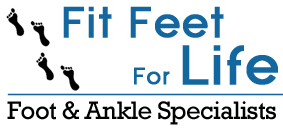How Sesamoid Bone Problems Hurt Your Feet
A sesamoid bone is one that is free floating and has no direct connection to other bones except by the tendons, muscles, and other soft tissues. These bones are often compared to pulleys since they help tendons slide back and forth with less friction. The kneecap is the largest sesamoid bone in the body, but there are also two small sesamoid bones in each foot near the first metatarsal bone that connects to the big toe.
Some of the most common conditions affecting these bones include the following:
Sesamoiditis— A type of tendonitis. The tendons surrounding the sesamoid bones can become irritated and inflamed causing great pain and discomfort. The condition prevalently affects ballet dancers, athletes, and those who are on their feet all day for their jobs.
Jamming your toe (turf toe)— A condition that occurs when you stub your toe while playing sports or practicing on fields made of artificial turf, although it can happen on any surface.
Fracture—The repeated pressure on the forefoot from sporting or other stressful physical activities can cause a sesamoid bone to break or crack and may require surgery to remove or repair the bone.
When you see your foot care specialist, an x-ray or MRI of the foot will be required, and a comprehensive treatment plan will be created depending upon the sesamoid condition that is discovered. At Fit Feet for Life, our team of board-certified podiatrists has access to advanced technologies and years of experience to help diagnose and treat a variety of foot and ankle problems, including heel pain, sports injuries, toe deformities, nail fungus, and plantar warts. Bonnie Sanchez, DPM, Gregory Cook, DPM, and Huy L. Nguyen, DPM provide high-quality foot and ankle care to patients in the Tampa/St. Petersburg area at our five offices conveniently located in Sun City Center, Clearwater, St. Petersburg, and our two Tampa locations. Please contact us for more information or to schedule an appointment.

